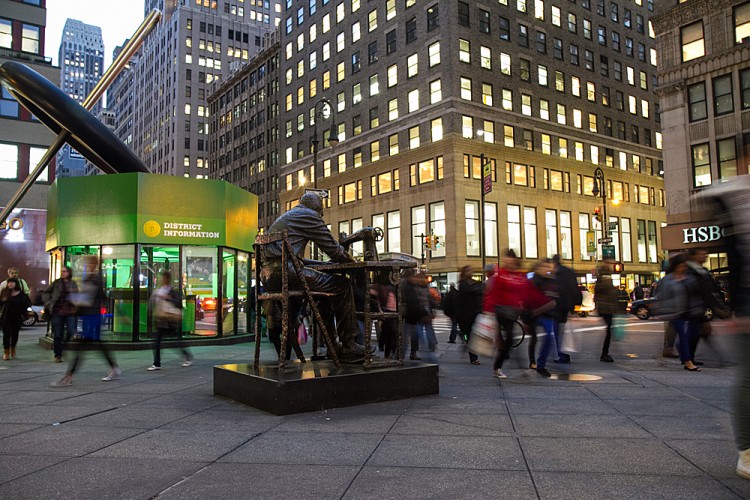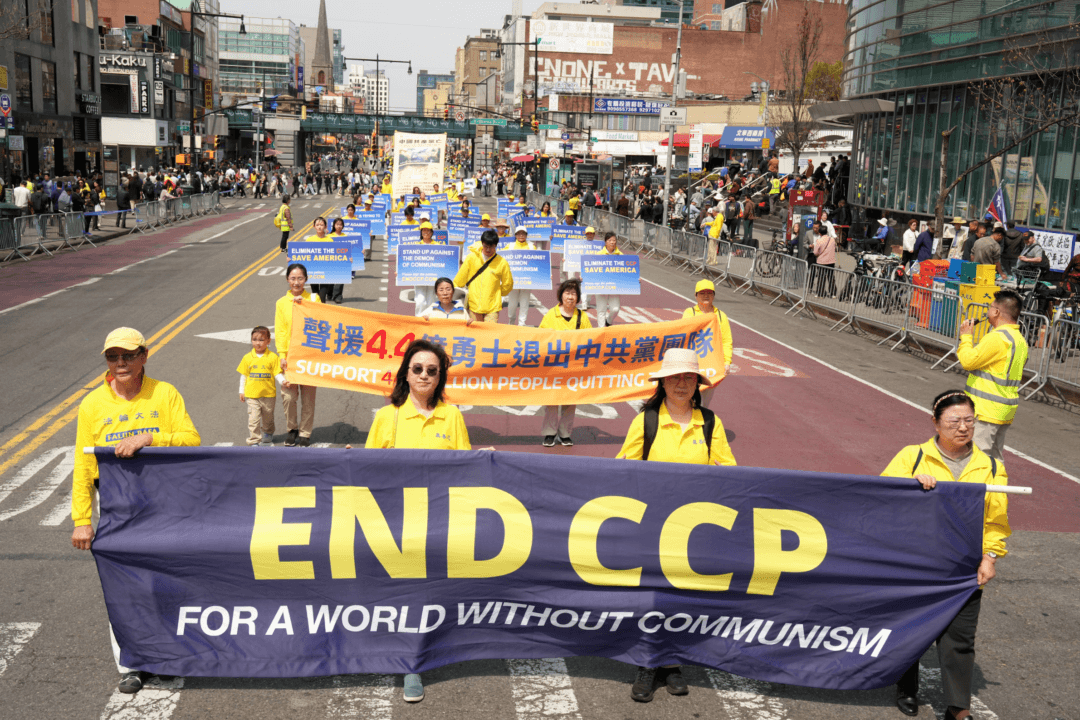NEW YORK—Making Manhattan’s Garment District “a desirable destination neighborhood” while providing incentives to keep garment manufacturers in the area are among recommendations outlined in a new report.
Released Wednesday by the Design Trust for Public Space, the report is the result of three years of study, observation, and meetings with stakeholders and some public officials.
The report came about after the Council of Fashion Designers of America (CFCA) approached The Design Trust in 2009. At the time, the City Council was considering changing zoning restrictions established in the Garment District in 1987 that protect apparel-manufacturing space.
In 2010, CFCA and the Design Trust published a Made in Midtown website, outlining why the Garment District is important to the city.
The second report, released Wednesday, outlines 17 recommendations for City Council to consider implementing over the next decade. The Design Trust estimates the recommendations would help the Garment District generate an additional $340 million annually.
“With this report, the Design Trust proposes a model for an urban creative district, one that leverages, rather than replaces, the presence of manufacturing to create real estate value, support jobs, and capture a distinctive identity,” said Susan Chin, executive director of the Design Trust, in a release.
The report’s four authors suggest City Council support local manufacturers and designers by establishing voluntary, market-based zoning incentives for dedicated manufacturing space; providing tax incentives to manufacturers; launching an NYC Made branding campaign; and offering tax credits for designers who agree to produce locally, as opposed to overseas.
“One of this country’s most unlikely urban trends in the 21st century has been the resurgence of manufacturing,” Chin, from the Design Trust, said in the release.
Upgrading the quality of the district’s public spaces with widened sidewalks, and dynamic streetscapes to strengthen the district’s identity and make it a destination location, are also among the recommendations.
The report suggests the future of the district, without intervention, is unstable due to a significant number of commercial vacancies and spaces illegally converted into offices. Almost half of the space in Garment District buildings within the protective zoning area, or 3.8 million square feet, is vacant or illegally converted. The remaining space is dedicated to fashion-related businesses.
The Garment District houses 270 factories, with up to 40 businesses per block, and providing incentives to those businesses to stay in the area is a priority of the report. At the same time, the vacant space has meant property owners want to change zoning regulations so they can use rent remaining available space for mixed use.
In addition to supporting local manufacturing, the report suggests adding an educational angle to help Midtown reposition the district. An NYC Fashion Innovation Center with exhibition space, classrooms, and a resource library would be a key component of this plan.
Upgrades to public space in the district, such as temporary installations and pop-up shops, would also give the area a stronger identity, according to the Design Trust.
The Garment District contributes $2 billion yearly to the city’s economy, and provides 7,100 jobs, according to the Design Trust.
Apparel production accounts for one-third of New York City’s manufacturing jobs, and could grow further with more incentives like tax credits and an NYC Made brand campaign, according to the study.
The Epoch Times publishes in 35 countries and in 19 languages. Subscribe to our e-newsletter.
Please send news tips to [email protected]







